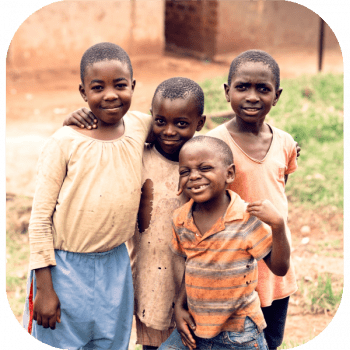Companies buying up farmland to offset their carbon credits
BBC Farming Today have released information that many companies are buying up farmland in the UK in order to just plant trees to offset their
The school finds a lot of difficulties to feed the 56 orphans who are catered for in the school dormitories. Creating a school garden incorporating HH-2 technology will help.



St Vianney Junior School is a Christian community founded school located in Kabubbu parish, in Wakiso district in Uganda to provide free education to orphans and most underprivileged children in Kabubbu sub-parish where over 600 orphan children were not attending school due to lack of financial support from extended families or aged grandparents.
There is need for a school garden to increase nutritious food production and also serve as demonstration to teach our pupils and their parents how to increase production of nutritious foods which is a major problem in our community. The orphan children who stay in the families of community care-takers come to school when they are hungry, and those who stay in the school dormitories have no reliable source of food. We get food supplied by the community members but not very often. Therefore, the school finds a lot of difficulties to feed the 56 orphans who are catered for in the school dormitories.
Due to lack of knowledge by parents, guardians and other caretakers, families in Kabubbu parish experience high levels of poverty and persistent food shortages. This creates a severe situation for them to provide good feeding to their family members. The major problem which has caused the decline in food production is land infertility.
The problem in our communities is food shortages in families of the caretakers of the AIDS orphan children and at school. Both the caretakers and school management could cultivate the land and produce enough food to feed the children, but the major problem is infertility of the land we have to cultivate to produce food.
The land under cultivation is over-used and needs fertilization. When the poor farmers and the children in our communities get facilitated to buy fertilizers and improved seeds, there will be good food production to feed the children both at school and in families. There is also the problem of seed supply. We need to buy improved seeds which give high yields and resist the agricultural hazards and weather. These are costly and the school and poor caretakers cannot afford the price.

There are over 1,000 orphaned and other vulnerable girls in Kabubbu parish. There are no effective strategies set by government to address this situation. The school caters for 348 orphans to get free primary education, free porridge at break-time and free lunch meals while at school. However, there is need to extend these services even beyond school time to cover the time the orphans spend with their care-takers at home. Many orphan children come to school when they are hungry because they do not have food for the supper meals. Most of them depend on the food they take from our school at lunch time. We are undertaking this project to ensure that the school gets enough food to feed the orphans while at school and also provide support to the care-takers to produce enough food to feed the orphans at home by training and facilitating them to engage in modern agricultural practices to increase food productivity for family consumption.
Orphans and other vulnerable children in our communities are violated with child trafficking for cheap labour, child domestic slavery, child sacrifice. Child sexual slavery and prostitution are on the increase which is also one of the common vices which escalate HIV/AIDS pandemic and lead to vulnerability of young people. Other vulnerable children include almost all children in the district. These include girls in poverty-stricken households, orphaned children, and children living with and or affected by HIV/AIDS, girls in broken families and homes prone to domestic violence. There are girls in abusive situations and those living in institutions that are not meeting the set standards of care. Other factors include HIV/AIDS, poor parenting/irresponsible parenthood, family break-ups, cultural and traditional norms, unlawful land evictions and poor land management, food shortages, unemployment in families and alcohol consumption in families, erosion of social values, peer pressure, weak provisions in the existing laws and poor enforcement, and inaccessibility to health and education centers.


Objective of the school garden
To serve as teaching tool for pupils to learn about the natural world and about where their food comes from.
Goal
Our goal is to equip our adults and orphan children with modern gardening skills to perform a valuable work in the school garden and extend the gardening knowledge to their families to improve food production in communities.
Beneficiaries
There is the greatest priority of the school garden to train 240 pupils, 150 AIDS orphan caretakers in the communities to acquire skills in soil fertilization, conservation and managing small areas of land for profitable agricultural production. In addition to academic needs, the garden shall provide personal development opportunities for both pupils and community members. Projects to grow food crops in the community gardens shall benefit caretakers to include a big member in the communities who are in the range of 1000 children.
The Protagonists
The project will also empower 150 AIDS orphan care-takers in 8 self-organized groups in 8 rural villages of Namayina, Kifumbiro, Manyangwa, Zitema, Ndazabazadde, Jjolwe, Kabubbu and Luyobyo. The Caretakers Trainers’ Training Program shall have the ability to infuse the groups with life and economic skills training that will further allow them to care for their orphaned grandchildren. The members in 8 villages will send 10-15 participants to be trained and they in turn bring this knowledge back to their villages. Local farmers will learn seeding, transplanting, grafting, fertilizing, and weeding techniques for a free. They will also gain access to valuable information about how to farm with improved hybrid seeds, ordinarily a risky initiative for uneducated farmers.
The Selected Nutritious Crops to be grown under this Project
1. PEAS – Rich in fibre, iron, magnesium, potassium, and Vitamin A,B6 and C
2. BEANS – Rich in iron, fibre, manganese and phosphorous
3. TOMATOES – Rich in fibre, iron, magnesium, niacin, potassium, Vitamin A, B6 and C
4. GREEN CARROTS – Rich in fibre, manganese, niacin, potassium, Vitamin A, B6 and C
5. LEAFY GREENS – These include Kale, Collards, Spinach, Turnip, Dodo, Nakati, Eggplants, Jobyo, Bbugga. All rich in calcium, iron, potassium, Vitamin A, B6 and C
6. GARLIC – Contains 70% of antioxidants that reduces chances of developing heart diseases, bacterial infections and food borne illnesses
7. WATERMELON AND GUAVAS – Rich in vitamin A and B
8. CUCURBITS: Include cucumber, pumpkins (cucurbita maxima)
9. OKRA has pusa, dwarf green, south sea and perkins varietie
10. Maize, this is the commonly served food stuff in schools. It is also served as porridge for breakfast
Budget
The total budget for this project is £41,234.25.

We work tirelessly to develop solutions to help tackle some of the biggest problems we face – sustainable farming and pollution-free DRY sanitation. With your help, we can accelerate this work.
BBC Farming Today have released information that many companies are buying up farmland in the UK in order to just plant trees to offset their
As of this sunny morning here in Wales we are now offering the cheapest Volcanic Rock Dust in easy to carry bags in the UK.
BBC Farming Today exposes the scandal of contaminated salad crops in the UK. Simple answer: Don’t use raw manure to produce your salad crops or
| Cookie | Duration | Description |
|---|---|---|
| cookielawinfo-checkbox-advertisement | 1 year | The cookie is set by GDPR cookie consent to record the user consent for the cookies in the category "Advertisement". |
| cookielawinfo-checkbox-analytics | 11 months | This cookie is set by GDPR Cookie Consent plugin. The cookie is used to store the user consent for the cookies in the category "Analytics". |
| cookielawinfo-checkbox-functional | 11 months | The cookie is set by GDPR cookie consent to record the user consent for the cookies in the category "Functional". |
| cookielawinfo-checkbox-necessary | 11 months | This cookie is set by GDPR Cookie Consent plugin. The cookies is used to store the user consent for the cookies in the category "Necessary". |
| cookielawinfo-checkbox-others | 11 months | This cookie is set by GDPR Cookie Consent plugin. The cookie is used to store the user consent for the cookies in the category "Other. |
| cookielawinfo-checkbox-performance | 11 months | This cookie is set by GDPR Cookie Consent plugin. The cookie is used to store the user consent for the cookies in the category "Performance". |
| elementor | never | This cookie is used by the website's WordPress theme. It allows the website owner to implement or change the website's content in real-time. |
| viewed_cookie_policy | 11 months | The cookie is set by the GDPR Cookie Consent plugin and is used to store whether or not user has consented to the use of cookies. It does not store any personal data. |
| Cookie | Duration | Description |
|---|---|---|
| mailchimp_landing_site | 1 month | The cookie is set by the email marketing service MailChimp. |
| Cookie | Duration | Description |
|---|---|---|
| _ga | 2 years | This cookie is installed by Google Analytics. The cookie is used to calculate visitor, session, campaign data and keep track of site usage for the site's analytics report. The cookies store information anonymously and assign a randomly generated number to identify unique visitors. |
| _gat_gtag_UA_203491877_1 | 1 minute | This cookie is set by Google and is used to distinguish users. |
| _gat_UA-203491877-1 | 1 minute | This is a pattern type cookie set by Google Analytics, where the pattern element on the name contains the unique identity number of the account or website it relates to. It appears to be a variation of the _gat cookie which is used to limit the amount of data recorded by Google on high traffic volume websites. |
| _gid | 1 day | This cookie is installed by Google Analytics. The cookie is used to store information of how visitors use a website and helps in creating an analytics report of how the website is doing. The data collected including the number visitors, the source where they have come from, and the pages visted in an anonymous form. |
| CONSENT | 16 years 4 months | These cookies are set via embedded youtube-videos. They register anonymous statistical data on for example how many times the video is displayed and what settings are used for playback.No sensitive data is collected unless you log in to your google account, in that case your choices are linked with your account, for example if you click “like” on a video. |
| Cookie | Duration | Description |
|---|---|---|
| IDE | 1 year 24 days | Used by Google DoubleClick and stores information about how the user uses the website and any other advertisement before visiting the website. This is used to present users with ads that are relevant to them according to the user profile. |
| test_cookie | 15 minutes | This cookie is set by doubleclick.net. The purpose of the cookie is to determine if the user's browser supports cookies. |
| VISITOR_INFO1_LIVE | 5 months 27 days | This cookie is set by Youtube. Used to track the information of the embedded YouTube videos on a website. |
| YSC | session | This cookies is set by Youtube and is used to track the views of embedded videos. |
| yt-remote-connected-devices | never | These cookies are set via embedded youtube-videos. |
| yt-remote-device-id | never | These cookies are set via embedded youtube-videos. |
| yt.innertube::nextId | never | These cookies are set via embedded youtube-videos. |
| yt.innertube::requests | never | These cookies are set via embedded youtube-videos. |
| Cookie | Duration | Description |
|---|---|---|
| cookies.js | session | No description available. |
| wp_woocommerce_session_7ef5404579515d013e9154529f907a7f | 2 days | No description |